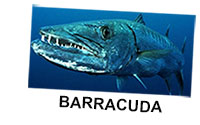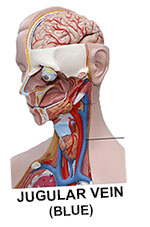
Articles, videos about Tongkat Ali, Black Ginger, and Butea Superba
Articles, videos about optimal sex
Migraine
This article advances the hypothesis that in many cases, migraine is a foodborne illness. The common causative microorganisms are a range of bacteria, including Lactobacillus strains used in the fermentation of milk and vegetables and affecting the decay of many foods. These bacteria convert amino acids into biogenic amines. All mammalian organisms use some amines as neurotransmitters and in the immune system, and can synthesize them themselves in necessary quantities. Excess amines, whether produced by an organism itself or entering the body as food, are broken down by amine oxidase enzymes present throughout any mammalian organism. The particularities of these enzymes are genetically encoded, and thus vary from person to person. Some people handle amines entering the body with food better than others. This is in line with migraine running in families. If excess biogenic amines are not broken down in a timely manner, they cause, in extreme cases, food poisoning, even fatal. On a lesser scale, so the hypothesis of this article, poorly managed excess biogenic amines cause migraine.
The US FDA, on its consumer pages, classifies 16 conditions as foodborne diseases. [What You Need to Know about Foodborne Illnesses]. Of those, 14 are caused by bacteria and 2 by viruses. Salmonella infection is the most well-known bacterial, and Hepatitis A the best-known viral foodborne disease.
The traditional view of migraine explained it as a vascular condition. During the aura phase, blood vessels around the skull were thought to be contracted (or cramped). This would reduce blood flow to the eyes, causing typical visual effects like flickering or blind spots, or other sensual deficiencies. Then the blood vessels would expand disproportionately and exert pressure on nerves around the skull, thus causing pain.
Turned out old science was wrong. When blood vessels were measured during the aura and headache phases, they weren't constricted or expanded in line with the theory. In 2009, Brain (one of the world's foremost journals of neurology, published by Oxford University Press since 1878) summarized the change of winds in the headline: "The vascular theory of migraine — a great story wrecked by the facts" [Brain, Volume 132, Issue 1, January 2009]
So, what is the link between migraine and cortical spreading depression. No interference with cortical spreading depression ever stopped a migraine, and it was never possible to induce a migraine by setting off a cortical spreading depression. All research on cortical spreading depressions was done in rabbits and cats. It wasn't even possible to prove the existence of cortical spreading depression in humans, unless a person had suffered extensive brain injury. Reason: cortical spreading depression propagates on the surface of brains. It does not jump easily over sulci (the furrows in brain folds) from brain gyri (bulged folds) to gyri; but heavily damaged brains do not have divided folds like healthy brains, thus cortical depressions spread more easily. During migraine attacks in humans, cortical spreading depression has never been measured (a fact for which neurologists came up with many excuses). [Persistent questions]
Wow! Just that?
Yeap.
As a scientific explanation for migraine, cortical spreading depression has probably undergone brain death.
Cortical spreading depression, however, is still very much alive in the marketing efforts of neurologists. YouTube is full of clips that have been uploaded by headache web sites. Neurologists want you to hire their services... elaborate diagnostics, expensive consultations which they bill to your insurance company. Roughly 20 percent of Americans suffer from migraine [Source: The Prevalence and Impact of Migraine and Severe Headache in the United States: Figures and Trends From Government Health Studies]. 65 million potential patients. If only half shows up for consultations with neurologists, that's going to be a bonanza.
Neurologists will prescribe neurological medications, typically expensive. Thus, big pharma is on the bandwagon of the neurologists.
The vascular, neurological, and inflammatory theories of migraine focus on what happens during migraine episodes. An entirely different perspective concentrates on what causes migraine episodes. Patients who are cured because they can avoid the causes of migraine attacks won't care much about what happens during them. Anyway, they no longer are afflicted.
Biogenic amines, mostly tyramine and histamine, have long been considered migraine triggers. In high enough dosages, tyramine and histamine in food make not just migraine sufferers sick, but any human.
Lists of prohibited and allowed foods for migraineurs are plentiful on non-academic websites. Many of these lists are dubious. It's not the specific foods that impact migraine sufferers, but the tyramine and histamine contents. And for any food, these vary from batch to batch, depending on several parameters.
As a drastic example, the histamine content of a tuna sandwich can vary by a factor of 1000 when the same tuna sandwich is bought at the same shop, but a week apart. Maybe their refrigerator broke down, you never know.
For one and the same kind of fruit, the tyramine load can vary by a factor of 100, depending on the condition under which if was harvested and how it was processed. Once the tyramine is in, you can't get it out, unless the whole lot is injected with amine oxidase enzymes that convert an amine group into ammonia, (NH3). Boiling, waving, or even deep-frying won't remove the tyramine or histamine, but can easily mask a taste that would otherwise betray spoilage.
To be meaningful at all, histamine and tyramine must be quantified. It's NOT that cheese is "prohibited" because it contains tyramine, and fruit and vegetables are "allowed".
The human body uses 20 amino acids to synthesize proteins. 9 are essential, they must come from nutrition. They are: histidine, isoleucine, leucine, lysine, methionine, phenylalanine, threonine, tryptophan, valine. Another 11 may come from food, or are derived by the human organism from essential amino acids. They are: alanine, arginine, asparagine, aspartic acid, cysteine, glutamic acid, glutamine, glycine, proline, serine, tyrosine
Human enzymes or enzymes of bacteria either within the human body or present in food we consume turn amino acids into amines by decarboxylation (the removal of carbondioxide, CO2, molecules).
The enzymatic derivates of amino acids include:
Histamine (a crucial amine in the immune system) from histidine
Most of these amines have important functions in the human body. Cadaverine, putrescine, spermidine, and spermine, and are needed in cells for protein synthesis and membranes. In human pathology, however, histamine and tyramine are the most relevant. And this article is focused on tyramine.
The following bacteria have been identified as generating tyramine:
Gram-positive: Bacillus thuringiensis. Carnobacterium divergens1, Enterococcus durans, Enterococcus hirae, Enterococcus faecalis, Enterococcus faecium, Lactobacillus brevis, Lactobacillus curvatus, Tetragenococcus halophilus
The most comprehensive list of tyramine measurements was compiled by Gaby Andersen, Patrick Marcinek, Nicole Sulzinger, Peter Schieberle, Dietmar Krautwurst and published in February 2019 in the journal Nutrition Reviews [Food sources and biomolecular targets of tyramine ]. Be prepared for some surprises.
Dairy (except cheese)
Buttermilk, 2.2 mg/kg, Souci et al (2016)
Cow’s milk, none detected, Novella-Rodriguez et al (2000)
Cream, 1.7 mg/kg, Souci et al (2016)
Sour cream, 1.4 mg/kg, Souci et al (2016)
Quark, 2.4 mg/kg, Souci et al (2016)
Yogurt, 1.3 mg/kg, Souci et al (2016)
Out of three tests, two were negative, and the one test that detected tyramine at all only found a very small amount. But mind you: spoiled yogurt can be loaded with tyramine up to dangerous levels. Lactobacillus varieties, responsible for yogurt fermentation, are the champions when it comes to the conversion of tyrosine to tyramine.
Cheese
A wide spectrum of measurements was reported for cheeses. For brie, it ranged from none detected to 260.0 mg/kg in tests conducted by one team, for parmesan 4.0 mg/kg to 290.0 mg/kg, for gauda 20.0 mg/kg to 670.0 mg/kg, for roquefort 27.0 mg/kg to 1100.0 mg/kg. For edam, it was 13.5 mg/kg to 310.0 mg/kg by three teams. For no food item are the measurements as confusing, and unequal, as they are for cheese. Different brands or batches of the same kind of cheese can have more than 50 times as much tyramine as other brands or batches, and you can't know why. It could be a flaw in the culture, or the aging process, or an event during transportation.
Appenzeller, 55.0 mg/kg, Souci et al (2016)
Brie, none detected to 260.0 mg/kg, Souci et al (2016)
Camembert, 37.0 mg/kg, Souci et al (2016)
Cheddar, 350.0 mg/kg, Souci et al (2016)
Edam, 310.0 mg/kg, Souci et al (2016)
Emmental, 42.0 mg/kg, Souci et al (2016)
Feta, 152.0 mg/kg to 246.0 mg/kg, Valsamaki et al (2000)
Gorgonzola, 8.0 mg/kg, Lange et al (2002)
Gouda, 20.0 mg/kg to 670.0 mg/kg, Souci et al (2016)
Gruyère, 37.0 mg/kg, Souci et al (2016)
Leerdammer, none detected, Mayr & Schieberle (2012)
Parmesan, 4.0 mg/kg to 290.0 mg/kg, Souci et al (2016)
Roquefort, 27.0 mg/kg to 1100.0 mg/kg, Souci et al (2016)
Tilsit, 32.0 mg/kg, Souci et al (2016)
Meat
Chicken liver, 100.0 mg/kg, Souci et al (2016)
Ham, cooked, 6.0 mg/kg to 108.0 mg/kg, Saccani et al (2005)
Ham, dry cured, 7.5 mg/kg, Lange et al (2002)
Onion sausage, 32.0 mg/kg, Lange et al (2002)
Ox liver, 270.0 mg/kg, Souci et al (2016)
Pork, fresh meat, none detected to 56.0 mg/kg, Saccani et al (2005)
Salami, 77.1 mg/kg, Mayr & Schieberle (2012)
Fish
Cod, 2.0 mg/kg, Lange et al (2002)
Fermented fish sauce, 276.0 mg/L to 357.0 mg/L, Kirschbaum et al (2000)
Herring, none detected, Lange et al (2002)
Herring, cured, none detected to 3000.0 mg/kg, Souci et al (2016)
Mackerel, 25.8 mg/kg to 27.4 mg/kg, Shakila et al (2001)
Mackerel in brine, none detected, Shakila et al (2001)
Mackerel salt-dried, 398.4 mg/kg to 413.8 mg/kg, Shakila et al (2001)
Salmon, none detected, Lange et al (2002)
Sardines, 16.2 mg/kg to 11.8 mg/kg, Shakila et al (2001)
Sardines in oil, none detected, Shakila et al (2001)
Sardine, salt-dried, 169.5 mg/kg to 178.1 mg/kg, Shakila et al (2001)
Seer fish, 9.4 mg/kg to 10.7 mg/kg, Shakila et al (2001)
Seer fish, salt dried, 154.2 mg/kg to 154.1 mg/kg, Shakila et al (2001)
Shrimp, 8.8 mg/kg to 12.6 mg/kg, Shakila et al (2001)
Shrimp, salt dried, 693.2 mg/kg to 704.7 mg/kg, Shakila et al (2001)
Tuna, 0.06 mg/kg, Mayr & Schieberle (2012)
Tuna in oil, 0.72 mg/kg, Souci et al (2016)
Alcoholic beverages
Beer, German Vollbier, 1.8 mg/L to 12.0 mg/L, Souci et al (2016)
Beer, alcohol-free, 1.2 mg/L, Souci et al (2016)
Wine, port, 0.51 mg/L, Cunha et al (2011)
Wine, red, none detected to 20.0 mg/L, Souci et al (2016)
Wine, white, none detected to 3.0, Souci et al (2016)
Apple, none detected, Tarjan & Janossy (1978)
Apple juice, 0.1 mg/L, Maxa & Brandes (1993)
Avocado, 23.0 mg/kg, Souci et al (2016)
Banana, 7.0 mg/kg, Souci et al (2016)
Currants, none detected, Tarjan & Janossy (1978)
Currant juice, freshly squeezed, 3.26 mg/L, Maxa & Brandes (1993)
Grape, 691.0 mg/kg, Tarjan & Janossy (1978)
Grape juice, 0.04 mg/L, Cunha et al (2011)
Grapefruit juice, freshly squeezed, 0.1 mg/L, Maxa & Brandes (1993)
Hazelnut, 1.8 mg/kg, Lavizzari et al (2006)
Orange, 10.0 mg/kg, Souci et al (2016)
Orange juice, 0.21 mg/L, Maxa & Brandes (1993)
Orange juice, freshly squeezed, 0.1 mg/L to 0.49 mg/L, Maxa & Brandes (1993)
Peach, none detected, Tarjan & Janossy (1978)
Pear, none detected, Tarjan & Janossy (1978)
Plum, none detected to 6.0 mg/kg, Souci et al (2016)
Raspberry, 10.0 mg/kg to 90.0 mg/kg, Souci et al (2016)
Raspberry juice, freshly squeezed, 66.66 mg/L, Maxa & Brandes (1993)
Watermelon, 460.0 mg/kg, Tarjan & Janossy (1978)
Vegetables
Beetroot, 160.0 mg/kg, Tarjan & Janossy (1978)
Cabbage, 670.0 mg/kg, Tarjan & Janossy (1978)
Chinese cabbage, 1.26 mg/kg, Simon-Sarkadi & Holzapfel (1994)
Cabbage, sauerkraut, 20.0 mg/kg, Souci et al (2016)
Cabbage, fermented juice, 37.1 mg/L to 73.0 mg/L, Kirschbaum et al (2000)
Kohlrabi, 930.0 mg/kg, Tarjan & Janossy (1978)
Carrot, 0.001 mg/kg, Sulzinger et al (2016)
Carrot juice, 0.002 mg/L, Sulzinger et al. (2016)
Cauliflower, 400.0 mg/kg, Tarjan & Janossy (1978)
Cucumber, 250.0 mg/kg, Tarjan & Janossy (1978)
Endive, 1.60 mg/kg, Simon-Sarkadi & Holzapfel (1994)
Green pea, frozen, 8.7 mg/kg, Kalac et al (2002)
Haricot bean, 160.0 mg/kg, Tarjan & Janossy (1978)
Iceberg lettuce, 0.94 mg/kg, Simon-Sarkadi & Holzapfel (1994)
Miso, 24.6 mg/kg to 349.0 mg/kg, Kirschbaum et al (2000)
Olives, none detected, Lange et al (2002)
Paprika, 266.0 mg/kg, Tarjan & Janossy (1978)
Potato, 1.14 mg/kg, Sulzinger et al. (2016)
French fried potatoes, raw, 0.77 mg/kg, Sulzinger et al. (2016)
Radicchio, 2.73 mg/kg, Simon-Sarkadi & Holzapfel (1994)
Radish, 200.0 mg/kg, Tarjan & Janossy (1978)
Soy sauce, 17.7 mg/L to 172.0 mg/L, Kirschbaum et al (2000)
Soybeans, 9.05 mg/kg, Bartkiene et al (2015)
Soybean, fermented, 27.8 mg/kg to 416.1 mg/kg, Bartkiene et al (2015)
Sufu, fermented tofu, none detected to 1125.4 mg/kg, Yen (1986)
Spinach, 3.78 mg/kg, Sulzinger et al. (2016)
Spinach purée, frozen, 10.2 mg/kg, Kalac et al (2002)
Spinach, boiled, 2.58 mg/kg, Sulzinger et al. (2016)
Tomato, 4.0 mg/kg, Souci et al (2016)
Tomato ketchup, 33.6 mg/kg, Kalac et al (2002)
Tomato, concentrated purée, 7.23 mg/kg, Sulzinger et al. (2016)
Turnip, none detected, Tarjan & Janossy (1978)
Zucchini, 0.06 mg/kg, Sulzinger et al. (2016)
Others
Chocolate, 3.11 mg/kg, Mayr & Schieberle (2012)
Coffee, ground, 1.26 mg/kg to 16.14 mg/kg, Restuccia et al (2015)
Coffee, brewed, 0.25 mg/L to 1.89 mg/L, Restuccia et al (2015)
Alkhouli, M; Mathur, M; Patil, P. (2014), Revisiting the “cheese reaction”: more than just a hypertensive crisis? Journal of Clinical Psychopharmacology:, Volume 34, Issue 5, Pages 665-667, https://pubmed.ncbi.nlm.nih.gov/25118080/
American Chemical Society New Test Could Help Consumers Avoid Surprise Headaches From Chocolate, Wine, American Chemical Society, https://www.sciencedaily.com/releases/2007/10/071001125645.htm
Andersen, G; Krautwurst, D; (2016) Trace amine-associated receptors in the cellular immune system, In: Farooqui T, Farooqui AA, eds. Trace Amines and Neurological Disorders: Potential Mechanisms and Risk Factors. San Diego, CA: Academic Press, Pages 97–106,https://scholar.google.com/scholar_lookup?title=Trace%20Amines%20and%20Neurological%20Disorders%3A%20Potential%
Andersen, Gaby; Marcinek, Patrick; Sulzinger, Nicole; Schieberle, Peter; Krautwurst, Dietmar (2019), Food sources and biomolecular targets of tyramine Nutrition Reviews, Volume 77, Issue 2, Pages 107–115, https://doi.org/10.1093/nutrit/nuy036
Anli, RE; Vuralb, N; Yilmaza, S, (2004) The determination of biogenic amines in Turkish red wines. Journal of Food Composition and Analysis, Volume 17, Issue 1, Pages 53-62 https://doi.org/10.1016/S0889-1575(03)00104-2
Antibody Affinity, Bio-Rad, https://www.bio-rad-antibodies.com/antigen-antibody-interactions.html
Arnau, J; Guerrero, L; Sárraga, C. (1998), The effect of green ham pH and NaCl concentration on cathepsin activities and the sensory characteristics of dry-cured hams Journal Science Food Agriculture, Vol. 77: Pages 387–392, http://dx.doi.org/10.1002/(ISSN)1097-0010
Asatoor, A M; Levi, A J; Milne, M.D. (1963) Tranylcypromine and cheese, The Lancet, Volume 282, ISSUE 7310, P733-734, https://doi.org/10.1016/S0140-6736(63)90368-4
Babusyte, A; Kotthoff, M; Fiedler, J.; Krautwurst, D. (2013) Biogenic amines activate blood leukocytes via trace amine-associated receptors TAAR1 and TAAR2, Journal of Leukocyte Biology, Volume 93, Issue 3, Pages 387-394, https://doi.org/10.1189/jlb.0912433
Bartkiene, E; Krungleviciute, V; Juodeikiene, G; et al. (2015), Solid state fermentation with lactic acid bacteria to improve the nutritional quality of lupin and soya bean Journal Science Food Agriculture
Vol 95(6): Pages 1336-42, https://doi.org/10.1002/jsfa.6827
Berry, MD. (2004), Mammalian central nervous system trace amines. Pharmacologic amphetamines, physiologic neuromodulators, Journal of Neurochemistry, Volume 90, Issue 2, Pages 257-271, https://doi.org/10.1111/j.1471-4159.2004.02501.x
Bieck, P.R.; Antonin, K.H. (1988) Oral tyramine pressor test and the safety of monoamine oxidase inhibitor drugs: comparison of brofaromine and tranylcypromine in healthy subjects, Journal of Clinical Psychopharmacology, Volume 8, Issue 4, Pages 237-245, https://journals.lww.com/psychopharmacology/Citation/1988/08000/Oral_Tyramine_
Blackwell, B. (1963), Hypertensive crisis due to monoamine-oxidase inhibitors, Lancet,
Volume 282, ISSUE 7313, P849-851, https://doi.org/10.1016/S0140-6736(63)92743-0
Borowsky, B; Adham, N; Jones, K A; Raddatz, R; Artymyshyn, R; Ogozalek, KL; Durkin, M M; Lakhlani, P P; Bonini, J A; Pathirana, S; Boyle, N; Pu, x; Kouranova, E; Lichtblau, H; Ochoa, F Y; Branchek, T A; Gerald, C (2001) Trace amines: identification of a family of mammalian G protein-coupled receptors, PNAS Vol 98 (16) Pages 8966-8971; https://doi.org/10.1073/pnas.151105198
Bonetta S, Carraro E, Coisson JD, Travaglia, F; Arlorio, M (2008), Detection of biogenic amine producer bacteria in a typical Italian goat cheese, Journal of Food Protection, Vol. 71 (1): Pages 205–209, https://doi.org/10.4315/0362-028X-71.1.205
Borgdorff, Piet (2017), Arguments against the role of cortical spreading depression in migraine, Neurological Research, Volume 40, Issue 3 , https://doi.org/10.1080/01616412.2018.1428406
Broadley, KJ. (2010), The vascular effects of trace amines and amphetamines Pharmacology & Therapeutics, Volume 125, Issue 3, Pages 363-375, https://doi.org/10.1016/j.pharmthera.2009.11.005
Broadley, KJ; Fehler, M; Ford, WR, Kidd, EJ (2013), Functional evaluation of the receptors mediating vasoconstriction of rat aorta by trace amines and amphetamines,
European Journal of Pharmacology, Volume 715, Issues 1–3, Pages 370-380, https://doi.org/10.1016/j.ejphar.2013.04.034
Bover-Cid, S; Hugas, M; Izquierdo-Pulido, M; Vidal-Carou, MC (2001) Amino acid-decarboxylase activity of bacteria isolated from fermented pork sausages, International Journal of Food Microbiology
Volume 66, Issue 3, Pages 185-189, https://doi.org/10.1016/S0168-1605(00)00526-2
Bueno-Solano, Carolina; López-Cervantes, Jaime, Sánchez-Machado, Dalia I.; Campas-Baypoli, Olga N. (2012), HPCL determination of histamine, tyramine and amino acids in shrimp by-products, Departamento de Biotecnología y Ciencias Alimentarias, Instituto Tecnológico de Sonora, https://doi.org/10.1590/S0103-50532012000100014
Burdychova, R; Komprda, T. (2007), Biogenic amine-forming microbial communities in cheese, FEMS, Volume 276, Issue 2, Pages: 129-215, https://doi.org/10.1111/j.1574-6968.2007.00922.x
Chander, H; Batish, VK; Babu, S, Singh, RS (1989), Factors affecting amine production by a selected strain of Lactobacillus bulgaricus, Journal of Food Science, Volume54, Issue 4, Pages 940-942, https://doi.org/10.1111/j.1365-2621.1989.tb07917.x
Chiellini, G; Frascarelli, S; Ghelardoni, S; Tobias, S C; DeBarber, A; Brogioni, S; Ronca-Testoni, S; Cerbai, E; Grandy, DV; Scanlan, TS; Zucchi, R. (2007), Cardiac effects of 3-iodothyronamine: a new aminergic system modulating cardiac function, The FASEB Journal, Volume21, Issue 7, Pages 1597-1608, https://doi.org/10.1096/fj.06-7474com
Chong, CY; Abu Bakar, F; Rahman, RA; Bakar, J; Zaman, MZ (2014), Biogenic amines, amino acids and microflora changes in Indian mackerel (Rastrellinger kanagurta) stored at ambient (25–29 °C) and ice temperature (0 °C), Journal of Food Science and Technology Volume 51, Pages 1118–1125, https://doi.org/10.1007/s13197-012-0621-3
Cid, SB; Miguelez-Arrizado, MJ; Becker, B; Holzapfel, W H.; Vidal-Caroua, M C (2008) Amino acid decarboxylation by Lactobacillus curvatus CTC273 affected by the pH and glucose availability, Food Microbiology, Volume 25, Issue 2, Pages 269-277, https://doi.org/10.1016/j.fm.2007.10.013
Cohen, G; Farooqui, R; Kesler, N. (1997), Parkinson disease: a new link between monoamine oxidase and mitochondrial electron flow, PNAS, Vol 94 (10) Pages 4890-4894,https://doi.org/10.1073/pnas.94.10.4890
Cohen, G. (2000), Oxidative stress, mitochondrial respiration, and Parkinson's disease, Annals of the New York Academy of Sciences, Volume 899, Issue 1,
Pages: ix-xi, 1-424, https://nyaspubs.onlinelibrary.wiley.com/toc/17496632/2000/899/1
Coton, M; Romano, A; Spano, G; Zieglerb, K.; Vetrana, C; Desmarais, C.; Lonvaud-Fune, A.; Lucas, P.; Cotona, E. (2010), Occurrence of biogenic amine-forming lactic acid bacteria in wine and cide, Food Microbiology
Volume 27, Issue 8, Pages 1078-1085, https://doi.org/10.1016/j.fm.2010.07.012
Cunha, SC; Faria, MA; Fernandes, JO (2011) Gas chromatograph–mass spectrometry assessment of amines in Port wine and grape juice after fast chloroformate extraction/derivatization Journal Agriculture Food Chemistry, Vol 59(16): Pages 8742-53, https://doi.org/10.1021/jf201379x
Dainty, R; Blom, H. (1995), Flavour chemistry of fermented sausages, Boston, MA: Springer Science+Business Media, Pages 176–193, https://scholar.google.com/scholar?cites=14094098160528838449&as_sdt=2005&sciodt=0,5&hl=en
Danchuk, Alexandra I; Komova, Nadezhda S.; Mobarez, Sarah N.; Doronin, Sergey Yu; Natalia A; Burmistrova, Markin, Alexey V.; Duerkop, Axel (2020), Optical sensors for determination of biogenic amines in food, Analytical and Bioanalytical Chemistry. https://link.springer.com/article/10.1007/s00216-020-02675-9
D’Andrea, G; D’Arrigo, A; Dalle Carbonare, M; Leon, A. (2012) Pathogenesis of migraine: role of neuromodulators, Headache, Volume 52, Issue 7
Pages: 1067-1205, https://doi.org/10.1111/j.1526-4610.2012.02168.x
D’Andrea, G; Terrazzino, S; Fortin, D; Farruggio, A; Rinaldi, L; Leon, A. (2003), HPLC electrochemical detection of trace amines in human plasma and platelets and expression of mRNA transcripts of trace amine receptors in circulating leukocytes, Neuroscience Letters, Volume 346, Issues 1–2, Pages 89-92, https://doi.org/10.1016/S0304-3940(03)00573-1
Del Rio, B; Redruello, B; Linares, D M; Linares, DM; Ladero, V; Fernandez, M; Linares, D. M.; Martin, M. C.; Ruas-Madiedo, P; Alvarez, MA (2017) The dietary biogenic amines tyramine and histamine show synergistic toxicity towards intestinal cells in culture, Food Chemistry, Volume 218, Pages 249-255, https://doi.org/10.1016/j.foodchem.2016.09.046
Dinter, J; Muhlhaus, J; Wienchol, C. L.; Yi, C X; Nürnberg, D; Morin, S; Grüters, A;
Köhrle, J; Schöneberg, T; Tschöp, M; Krude, H; Kleinau, G; Bieberman, H (2015), Inverse agonistic action of 3-iodothyronamine at the human trace amine-associated receptor 5 PLoS One, https://doi.org/10.1371/journal.pone.0117774
Doeun, Dara; Davaatseren, Munkhtugs; Chung, Myung-Sub (2017), Biogenic amines in foods, Food Science Biotechnology Vol. 26(6). Pages 1463–1474, https://dx.doi.org/10.1007%2Fs10068-017-0239-3
EFSA Journal EFSA Panel on Biological Hazards (BIOHAZ). Scientific opinion on risk based control of biogenic amine formation in fermented foods, EFSA Journal, Vol 9(10): Pages 2393, https://doi.org/10.2903/j.efsa.2011.2393
Fernandez, M; Linares, DM; Rodriguez, A; Alvarez, M.A. (2007), Factors affecting tyramine production in Enterococcus durans IPLA 655, Applied Microbiology and Biotechnology, Vol 73, pages 1400–1406, https://doi.org/10.1007/s00253-006-0596-y
Espinoza, S; Gainetdinov, RR. (2017), Neuronal functions and emerging pharmacology of TAAR1. In:Krautwurst D, Taste and Smell. Cham, Germany: Springer International Publishing; 2017:175–194, https://scholar.google.com/scholar_lookup?title=Taste%20and%20Smell&author=S%20Espinoza
Farooqui, T; Farooqui,AA (2016), Trace Amines and Neurological Disorders, Google Books,https://books.google.com/books?hl=en&lr=&id=Wj8oCwAAQBAJ&oi=fnd&pg=PP1&ots=o5BeyXT7Tr&sig=frUKOjJGDYmkf4nyURoQrA644DA
Finberg, JP; Gillman, K. (2011), Selective inhibitors of monoamine oxidase type B and the “cheese effect”, International Review of Neurobiology, Volume 100, Pages 169-190, https://doi.org/10.1016/B978-0-12-386467-3.00009-1
Fogel, WA; Lewinski, A; Jochem, J. (2007), Histamine in food: is there anything to worry about? Biochemical Society Transactions, Volume 35 (2): Pages 349–352,
https://doi.org/10.1042/BST0350349
Frascarelli, S; Ghelardoni, S; Chiellini, G; Vargiu, R; Ronca-Testoni, S; Scanlan, T S; Grandy, D K; Zucchi, R (2008), Cardiac effects of trace amines: pharmacological characterization of trace amine-associated receptors, European Journal of Pharmacology, Volume 587, Issues 1–3, Pages 231-236, https://doi.org/10.1016/j.ejphar.2008.03.055
Gardini, F; Martuscelli, M; Caruso, MC, Galgano, F; Crudeleb, MA; Favati, F; Guerzonia, M A; Suzzi, G (2001), Effects of pH, temperature and NaCl concentration on the growth kinetics, proteolytic activity and biogenic amine production of Enterococcus faecalis, International Journal of Food Microbiology,
Volume 64, Issues 1–2, Pages 105-117, https://doi.org/10.1016/S0168-1605(00)00445-1
Gardini, F; Ozogul, Y; Suzzi, G; Suzzi, G; Tabanelli1, G; Özogul, F (2016), Technological factors affecting biogenic amine content in foods: a review. Front Microbiology, Vol. 7: Page 1218, https://www.frontiersin.org/articles/10.3389/fmicb.2016.01218/full
Gloria, MB; Tavares-Neto, J; Labanca, RA, et al. (2005) Influence of cultivar and germination on bioactive amines in soybeans (Glycine max L. Merril) Journal Agriculture Food Chemistry, Vol 53(19): Pages 7480-5 https://doi.org/10.1021/jf0509310
Goadsby, Peter J. (2009) The vascular theory of migraine—a great story wrecked by the facts , Brain, Volume 132, Issue 1, Pages 6–7, https://doi.org/10.1093/brain/awn321
Gozal, EA; O'Neill, BE; Sawchuk, MA; Zhu, H; Halder, M; Chou CC; Hochman, S. (2014) Anatomical and functional evidence for trace amines as unique modulators of locomotor function in the mammalian spinal cord, Frontiers Neural Circuits, Vol 07, https://doi.org/10.3389/fncir.2014.00134
Granvogl, M; Bugan, S, Schieberle, P. (2006) Formation of amines and aldehydes from parent amino acids during thermal processing of cocoa and model systems: new insights into pathways of the Strecker reaction, Journal of Agricultural and Food Chemistry, Volume 54, Issue 5, Pages 1730–1739, https://doi.org/10.1021/jf0525939
Hambach, Anke; Evers, Stefan; Summ, Oliver; Husstedt, Ingo W; Frese, Achim (2013), The impact of sexual activity on idiopathic headaches: an observational study, Cephalalgia, Vol. 33(6):Pages 384-9. https://doi.org/10.1177/0333102413476374
Hanington, E. (1980), Diet and migraine, Journal of Human Nutrition, Vol 34(3): Pages 175-80, https://doi.org/10.3109/09637488009143438
Hauptmann, N; Grimsby, J; Shih, JC, Cadenas, E (1996), The metabolism of tyramine by monoamine oxidase A/B causes oxidative damage to mitochondrial DNA, Archives of Biochemistry and Biophysics, Volume 335, Issue 2, Pages 295-304, https://doi.org/10.1006/abbi.1996.0510
Innocente, N; D’Agostin, P; Formation of biogenic amines in a typical semihard Italian cheese, Journal of Food Protection, Vol. 65 (9): Pages 1498–1501, https://doi.org/10.4315/0362-028X-65.9.1498
Johansson, G; Berdague, JL; Larsson, M. Tran, N; Borcha, E (1994) Lipolysis, proteolysis and formation of volatile components during ripening of a fermented sausage with Pediococcus pentosaceus and Staphylococcus xylosus as starter cultures, Meat Science, Volume 38, Issue 2, 1994, Pages 203-218, https://doi.org/10.1016/0309-1740(94)90110-4
Kalac, P; Hlavatá, V; Krížek, M. (1997) Concentrations of five biogenic amines in Czech beers and factors affecting their formation. Food Chemistry, Volume 58, Issue 3, Pages 209-214, https://doi.org/10.1016/S0308-8146(96)00098-2
Kalac, P; Švecová, S; Pelikánová, T. (2002), Levels of biogenic amines in typical vegetable product
Food Chemistry, Volume 77, Issue 3, Pages 349-351, https://doi.org/10.1016/S0308-8146(01)00360-0
Karovicová, J; Kohajdová, Z. (2005), Biogenic amines in food. Chemical Paper [formerly Chem Zvesti],Vol 59: Pages 70–79, https://www.chempap.org/file_access.php?file=591a70.pdf
Khan, MZ; Nawaz, W. (2016), The emerging roles of human trace amines and human trace amine-associated receptors (hTAARs) in central nervous system Biomedicine & Pharmacotherapy Volume 83, Pages 439-449, https://doi.org/10.1016/j.biopha.2016.07.002
Kirschbaum, J; Rebscher, K; Bruckner, H. (2000), Liquid chromatographic determination of biogenic amines in fermented foods after derivatization with 3,5-dinitrobenzoyl chloride, Journal of Chromatography Volume 881, Issues 1–2, Pages 517-53 https://doi.org/10.1016/S0021-9673(00)00257-0
KD value: a quantitative measurement of antibody affinity, AbCam, https://www.abcam.com/primary-antibodies/kd-value-a-quantitive-measurement-of-antibody-affinity
Kleinau, G; Pratzka, J; Nurnberg, D; Grüters, A; Führer-Sakel, D; Krude, H; Köhrle, H; Schöneberg, T; Biebermann, H (2011), Differential modulation of Beta-adrenergic receptor signaling by trace amine-associated receptor 1 agonists, PLoS One, https://doi.org/10.1371/journal.pone.0027073
Konczol, A; Rendes, K; Dekany, M; Müller, J; Riethmüller, E; Tibor, G (2016), Blood-brain barrier specific permeability assay reveals N-methylated tyramine derivatives in standardised leaf extracts and herbal products of Ginkgo biloba, Journal of Pharmaceutical and Biomedical Analysis, Volume 131, Issue 30, Pages 167-174, https://doi.org/10.1016/j.jpba.2016.08.032
Ladero, V; Gomez-Sordo, C; Sanchez-Llana, E; Sánchez-Llana, E; del Rio, B; Redruello, B; Fernández, M; Martín, M. C; Alvarez, MA (2016), Q69 (an E. faecalis-infecting bacteriophage) as a biocontrol agent for reducing tyramine in dairy products, Frontiers in Microbiology, Volume 7: Pages 445, https://doi.org/10.3389/fmicb.2016.00445
Landete, JM; Ferrer, S; Polo, L; et al. (2005), Biogenic amines in wines from three Spanish regions, Journal of Agricultural and Food Chemistry, Vol 53, Issue 4, Pages 1119–1124, http://dx.doi.org/10.1021/jf049340k
La Gioia, F; Rizzotti, L; Rossi F, Gardini, F; Tabanelli, G; Torriani, S. (2011), Identification of a tyrosine decarboxylase gene (tdcA) in Streptococcus thermophilus 1TT45 and analysis of its expression and tyramine production in milk, ASM Journals
/ Applied and Environmental Microbiology, Vol. 77, No. 3, https://doi.org/10.1128/AEM.01928-10
Lange, J; Thomas, K; Wittman, C. (2002), Comparison of a capillary electrophoresis method with high-performance liquid chromatography for the determination of biogenic amines in various food samples. Journal of Chromatography B Analytical Technology Biomed Life Sci. Vol 779: Pages 229–239. https://doi.org/10.1016/s1570-0232(02)00372-0
Lavizzari, T; Veciana-Nogués, M; Bover-Cid, S; Mariné-Font, Abel; Vidal-Carou, Maria Carmen (2006), Improved method for the determination of biogenic amines and polyamines in vegetable products by ion-pair high-performance liquid chromatography, Journal of Chromatography A, Volume 1129, Issue 1, Pages 67-72, https://doi.org/10.1016/j.chroma.2006.06.090
Ledonne, A; Federici, M; Giustizieri, M; Pessia, M; Imbrici, P; Millan, M J; Bernardi, G; Mercuri, N B (2010), Trace amines depress D2-autoreceptor-mediated responses on midbrain dopaminergic cells, British Journal of Pharmacology, Volume 160, Issue6, Pages 1509-1520, https://doi.org/10.1111/j.1476-5381.2010.00792.x
Leuschner, RG; Hammes, WP. (1998) Degradation of histamine and tyramine by Brevibacterium linens during surface ripening of Munster cheese, Journal of Food Protection, Volume 61 (7): Pages 874–878, https://doi.org/10.4315/0362-028X-61.7.874
Leuschner, RG; Kurihara, R; Hammes, W.P. (1998), Effect of enhanced proteolysis on formation of biogenic amines by lactobacilli during Gouda cheese ripening, International Journal of Food Microbiology
Volume 44, Issues 1–2, Pages 15-20 https://doi.org/10.1016/S0168-1605(98)00118-4
Linares, DM; Del Rio, B; Ladero V, Martínez, N.; Fernández, M; Martín, M C; Álvarez, M A. (2012) Factors influencing biogenic amines accumulation in dairy products, Frontiers in Microbiology, https://doi.org/10.3389/fmicb.2012.00180
Lüthy, J; Schlatter, C. (1983) Biogenic amines in foods: effects of histamine, tyramine and phenylethylamine on man, Zeitschrift für Lebensmittel-Untersuchung und Forschung, Volume 177, Pages 439–443, https://doi.org/10.1007/bf01409672
Marcinek, P; Geithe, C, Krautwurst, D. (2017), Chemosensory G protein-coupled receptors (GPCR) in blood leukocytes. In:Krautwurst D , ed. Taste and Smell. Cham, Germany: Springer International Publishing, Pages 151–173.
Marcobal, A; De Las Rivas, B; Landete, J M;, Tabera, L; Muñoz, R (2011) Tyramine and phenylethylamine biosynthesis by food bacteria, Critical Reviews in Food Science and Nutrition, Volume 52, Issue 5 https://doi.org/10.1080/10408398.2010.500545
Marcobal, A; Martin-Alvarez, PJ; Moreno-Arribas, MV; Muñoz, R (2006) A multifactorial design for studying factors influencing growth and tyramine production of the lactic acid bacteria Lactobacillus brevis CECT 4669 and Enterococcus faecium BIFI-58, Research in Microbiology,
Volume 157, Issue 5, Pages 417-424, https://doi.org/10.1016/j.resmic.2005.11.006
Marcobal, A; Polo, MC; Marti´n-Álvarez, PJ; Moreno-Arribas, M.V. Biogenic amine content of red Spanish wines: comparison of a direct ELISA and an HPLC method for the determination of histamine in wines,
Food Research International, Volume 38, Issue 4, Pages 387-394 https://doi.org/10.1016/j.foodres.2004.10.008
Martinez-Villaluenga, C; Frias, J; Gulewicz, P; Vidal-Valverde, C (2008), Food safety evaluation of broccoli and radish sprouts, Food and Chemical Toxicology, Volume 46, Issue 5, Pages 1635-1644, https://doi.org/10.1016/j.fct.2008.01.004
Maxa, E; Brandes, W. Biogene (1993) Amine in Fruchtsäften [in German], Mitt Klosterneuburg Rebe Wein Obstb Fruchteverwert, Vol 43, Num 3, pp 101-106, https://pascal-francis.inist.fr/vibad/index.php?action=search&lang=en&terms=%220007-5922%22&index=is
Mayevsky, Avraham; Doron, Avi; Manor, Tamar; Meilin, Sigal; Zarchin, Nili. Ouaknine, George E. (1996), Cortical spreading depression recorded from the human brain using a multiparametric monitoring system, Brain Research,
Volume 740, Issues 1–2, Pages 268-274, https://doi.org/10.1016/S0006-8993(96)00874-8
Mayr, CM; Schieberle, P. (2012), Development of stable isotope dilution assays for the simultaneous quantitation of biogenic amines and polyamines in foods by LC-MS/MS. Journal Agricultural Food Chem. Vol 60: Pages 3026–3032, https://doi.org/10.1021/jf204900v
Moret, Sabrina; Smela, Dana;
Populin, Tiziana; Conte, Lanfranco (2005) A survey on free biogenic amine content of fresh and preserved vegetables, Food Chemistry, Vol. 89(3): Pages 355-361, http://dx.doi.org/10.1016/j.foodchem.2004.02.050
Millichap, J Gordon (1988), Oligoantigenic Diet for Epilepsy and Migraine. Pediatric Neurology Briefs, Vol. 2(12), pp.91–92. http://doi.org/10.15844/pedneurbriefs-2-12-5
Millichap, J. Gordon; MYee, Michelle (2003) The diet factor in pediatric and adolescent migraine, Pediatric Neurology
Volume 28, Issue 1, Pages 9-1 https://doi.org/10.1016/S0887-8994(02)00466-6
Naila, A, Flint, S, Fletcher, G, Bremer, P; Meerdink, G (2010) Control of biogenic amines in food—existing and emerging approaches, Journal of Food Science, Volume 75: Pages R139–R150 https://doi.org/10.1111/j.1750-3841.2010.01774.x
Nguyen, TV; Juorio, AV. (1989), Binding sites for brain trace amines, Cellular Molecular Neurobiology, Vol 9(3): Pages 297-311, https://doi.org/10.1007/bf00711411
Novella-Rodriguez, S; Veciana-Nogues, MT; Vidal-Carou, MC (2000), Biogenic amines and polyamines in milks and cheeses by ion-pair high performance liquid chromatography, Journal of Agricultural and Food Chemistry, Vol 48, Issue 11, Pages 5117–5123, https://doi.org/10.1021/jf0002084
Önal A. (2007) A review: current analytical methods for the determination of biogenic amines in foods. Food Chemistry, Volume 103, Issue 4, 2007, Pages 1475-1486 https://doi.org/10.1016/j.foodchem.2006.08.028
Philips, SR; Rozdilsky, B; Boulton, AA. (1978), Evidence for the presence of m-tyramine, p-tyramine, tryptamine, and phenylethylamine in the rat brain and several areas of the human brain, Biology of Psychiatry, Vol 13(1): Pages 51-7, http://www.ncbi.nlm.nih.gov/pubmed/623853
Poeaknapo, C. (2005), Mammalian morphine: de novo formation of morphine in human cells, Medical Science Moitor, Vol 1(5): Pages MS6-17, https://pubmed.ncbi.nlm.nih.gov/15874902/
Prester, L. (2011) Biogenic amines in fish, fish products and shellfish: a review, Food Additives & Contaminants: Part A, Volume 28, 2011, Issue 11,
Food Additives & Contaminants: Part A
Volume 28, 2011 - Issue 11, https://doi.org/10.1080/19440049.2011.600728
Restuccia, D; Spizzirri, UG; Parisi, OI, Cirillo, G; Picci, N (2015) Brewing effect on levels of biogenic amines in different coffee samples as determined by LC-UV, Food Chemistry
Volume 175, Pages 143-150 https://doi.org/10.1016/j.foodchem.2014.11.134
Roy, S; Ninkovic, J; Banerjee, S; Charboneau, R G; Das, S; Dutta, R; Kirchner, V. A; Koodie, L; Ma, J; Meng. J; Barke, RA (2011) Opioid drug abuse and modulation of immune function: consequences in the susceptibility to opportunistic infections, Journal of Neuroimmune Pharmacology, Volume 6, Article number: 442, https://link.springer.com/article/10.1007%2Fs11481-011-9292-5#citeas
Russell, F. A.; King, R.; Smillie, S.-J.; Kodji, X; Brain, S. D. (2014) Calcitonin Gene-Related Peptide: Physiology and Pathophysiology, Physiological Reviews, Vol. 94(4): Pages 1099–1142. https://dx.doi.org/10.1152%2Fphysrev.00034.2013
Saccani, G; Tanzi, E; Pastore, P; Cavallic, S; Reyd, M. (2005), Determination of biogenic amines in fresh and processed meat by suppressed ion chromatography-mass spectrometry using a cation-exchange column,
Journal of Chromatography A, Volume 1082, Issue 1, Pages 43-50, https://doi.org/10.1016/j.chroma.2005.05.030
EFSA Journal EFSA Panel on Biological Hazards (BIOHAZ). Scientific opinion on risk based control of biogenic amine formation in fermented foods, EFSA Journal, Vol 9(10): Pages 2393, https://doi.org/10.2903/j.efsa.2011.2393
Sathyanarayana Rao, TS; Yeragani, VK. (2009) Hypertensive crisis and cheese, Indian Journal of Psychiatry, Volume : 51, Issue : 1 , Page : 65-66, https://www.indianjpsychiatry.org/text.asp?2009/51/1/65/44910
Sen, N.P. (2006) Analysis and Significance of Tyramine in Foods Journal of Food Science Vol. 34(1): Pages 22 - 26
http://dx.doi.org/10.1111/j.1365-2621.1969.tb14354.x
Shakila, RJ; Vasundhara, TS; Kumudavally, KV (2001) A comparison of the TLC-densitometry and HPLC method for the determination of biogenic amines in fish and fishery products, Food Chemistry
Volume 75, Issue 2, Pages 255-259 https://doi.org/10.1016/S0308-8146(01)00173-X
Shalaby, A. R. (1996), Significance of biogenic amines to food safety and human health, Food Research International
Volume 29, Issue 7, October 1996, Pages 675-690
Food Research International
Silla Santos, MH. (1996) Biogenic amines: their importance in foods. International Journal Food Microbiology
Vol 29(2-3): Pages 213-31, https://doi.org/10.1016/0168-1605(95)00032-1
Simon-Sarkadi, L; Holzapfel, WH (2994), Determination of biogenic amines in leafy vegetables by amino acid analyser, Zeitschrift für Lebensmittel-Untersuchung und -Forschung Volume 198, pages 230–233, https://link.springer.com/article/10.1007%2FBF01192600#citeas
Sood, VK; Kosikowski, F.V. (1979) Accelerated cheddar cheese ripening by added microbial enzymes Journal Dairy Science, https://www.journalofdairyscience.org/article/S0022-0302(79)83516-X/pdf
Souci, SW; Fachmann, W; Kraut, H. (2016) Food Composition and Nutrition Tables, cabdirect.org, https://scholar.google.com/scholar?cites=9920400784025704931&as_sdt=2005&sciodt=0,5&hl=en
Špicka, J; Kalac, P; Bover-Cid, S; Krížek, M. (2002) Application of lactic acid bacteria starter cultures for decreasing the biogenic amine levels in sauerkraut, European Food Research and Technology, Volume 215, Pages 509–514, https://doi.org/10.1007/s00217-002-0590-2
Straub, BW; Tichaczek, PS; Kicherer, M; Hammes, WP (1994), Formation of tyramine byLactobacillus curvatus LTH 972, Zeitschrift für Lebensmittel-Untersuchung und Forschung Volume 199, pages 9–12, https://doi.org/10.1007/BF01192943
Tamang, JP; Tamang, B; Schillinger, U; Guigas, C; Holzapfel, WH (2009) Functional properties of lactic acid bacteria isolated from ethnic fermented vegetables of the Himalayas, International Journal of Food Microbiology,
Volume 135, Issue 1, Pages 28-33, https://doi.org/10.1016/j.ijfoodmicro.2009.07.016
Tarjan, V; Janossy, G. (3021) The role of biogenic amines in foods, Molecular Nutrition and Food Research, Volume 65, Issue 14, https://onlinelibrary.wiley.com/doi/10.1002/mnfr.202100100
Teive, H.A.G.; Kowacs, P. A.; Filho, P. Maranhão; Piovesan, E. J.; Werneck, L. C. (2005), Leão's cortical spreading depression, HISTORICAL NEUROLOGY. https://doi.org/10.1212/01.wnl.0000183281.12779.cd
Valoti, M; Moron, JA; Benocci, A; Sgaragli, G; Unzeta, M (1998), Evidence of a coupled mechanism between monoamine oxidase and peroxidase in the metabolism of tyramine by rat intestinal mitochondria, Biochemical Pharmacology, Volume 55, Issue 1, Pages 37-43, https://doi.org/10.1016/S0006-2952(97)00379-1
Valsamaki, K; Michaelidou, A; Polychroniadou, A. (2000) Biogenic amine production in Feta cheese, Food Chemistry,
Volume 71, Issue 2, November 2000, Pages 259-266, https://doi.org/10.1016/S0308-8146(00)00168-0
Vaughan, TR. (1994) The role of food in the pathogenesis of migraine headache, Clinical Reviews in Allergy Vol 12(2): Pages 167-80, https://doi.org/10.1007/bf02802353
Walker, S E; Shulman, K I; Tailor, S A; Gardner, D (1996), Tyramine content of previously restricted foods in monoamine oxidase inhibitor diets Clinical Psychopharmacololgy, Vol. 16(5):Pages 383-8, https://doi.org/10.1097/00004714-199610000-00007
Wasik, A M; Millan, M J; Scanlan, T; Barnes, N M; Gordon, J (2012), Evidence for functional trace amine associated receptor-1 in normal and malignant B cells, Leukemia Research, Volume 36, Issue 2, Pages 245-249, https://doi.org/10.1016/j.leukres.2011.10.002
Yen, GC (1986), Studies on biogenic amines in foods. I. Determination of biogenic amines in fermented soybean foods by HPLC,
Journal Chinese Agricultural Chemistry Society, Volume 24: Pages 211–217,
https://scholar.google.com/scholar_lookup?title=Studies%20on%20biogenic%20amines%20in%20foods.%20I.%20
Zarko, Jennette (2015), Dietary and lifestyle modifications for migraine prevention, Brain Institute, https://blogs.ohsu.edu/brain/2015/06/18/dietary-and-lifestyle-modifications-for-migraine-prevention/
Ziegler, W; Hahn, M; Wallnoefer, PR. (1994) Verhalten biogener Amine bei der Zubereitung ausgewählter pflanzlicher Lebensmittel [in German],
Deutsche Lebensmittel-Rundschau. Vol 90, Num 4, Pages 108-112,
ISSN https://pascal-francis.inist.fr/vibad/index.php?action=search&lang=en&terms=%220012-0413%22&index=is
Zhu, W; Cadet, P; Baggerman, G; Mantione, K J; Stefano, G B (3005) Human white blood cells synthesize morphine: CYP2D6 modulation, The Journal of Immunology, Vol 175 (11) Pages 7357-7362; DOI: https://doi.org/10.4049/jimmunol.175.11.7357
Zhu, ZT; Munhall, AC; Johnson, SW. (2007), Tyramine excites rat subthalamic neurons in vitro by a dopamine-dependent mechanism, Neuropharmacology
Volume 52, Issue 4, Pages 1169-1178, https://doi.org/10.1016/j.neuropharm.2006.12.005
By tongkatali.org
tongkataliorg3@gmail.com
Updated April 19, 2023
Foodborne disease


What happens during migraine attacks?





Medical marketing
Nutritional triggers
Amino acid decarboxylation
Tyramine from tyrosine; several important neurotransmitters, grouped as catecholamines, are also derived from tyramine: dopamine, noradrenaline, adrenaline
Agmatine from arginine
Putrescine, spermidine, spermine from arginine, glutamine, or ornithine
Cadaverine from lysine, glutamine, or ornithine
ß-phenylethylamine from phenylethylalanine
Serotonin and tryptamine from tryptophan
Gram-negative: Pseudomonas entomophila, Pseudomonas putida, Pseudomonas putida, Gluconacetobacter diazotrophicus, Granulibacter bethesdensis [Source: Tyramine and Phenylethylamine Biosynthesis by Food Bacteria
]
Tyramine
None detected, Mayr & Schieberle (2012)
None detected, Novella-Rodriguez et al (2000)
130.0 mg/kg, Tarjan & Janossy (1978)
13.5 mg/kg, Lange et al (2002)
25.6 mg/kg, Tarjan & Janossy (1978)
128.7 mg/kg, Tarjan & Janossy (1978)
3.75 mg/kg, Mayr & Schieberle (2012)
152.0 mg/kg, Lange et al (2002)
50.0 mg/kg, Tarjan & Janossy (1978)
4.0 mg/kg to 171.0 mg/kg, Saccani et al (2005)
17.0 mg/kg, Lange et al (2002)
None detected to 1.2 mg/kg, Shakila et al (2001)
Beer, Pilsner lager, 1.4 mg/L, Souci et al (2016)
6.85 mg/L, Kalac et al (1997)
6.16 mg/L, Kalac et al (1997)
1.93 mg/L, Mayr & Schieberle (2012)
0.8 mg/L to 2.6 mg/L, Landete et al (2005)
38.8 mg/L, Tarjan & Janossy (1978)
1.40 mg/L, Marcobal et al (2005)
None detected to 0.292 mg/L, Anli et al (2004)
3.1 mg/L, Lüthy & Schlatter (1983)
110.8 mg/L, Tarjan & Janossy (1978)
1.2 mg/L to 22.7 mg/L, Lüthy & Schlatter (1983)
Fruit
0.9 mg/kg, Lavizzari et al (2006)
0.1 mg/L, Maxa & Brandes (1993)
None detected, Tarjan & Janossy (1978)
60.66 mg/kg, Mayr & Schieberle (2012)
6.0 mg/kg, Lange et al (2002)
119.0 mg/kg, Tarjan & Janossy (1978)
none detected to 49.8 mg/kg, Yen (1986)
840.0 mg/kg, Tarjan & Janossy (1978)
2.0 mg/kg, Lavizzari et al (2006)
French fried potatoes, baked, 1.77 mg/kg, Sulzinger et al. (2016)
16.1 mg/L to 1699.0 mg/L, Yen (1986)
none detected, Gloria et al (2005)
286.0 mg/kg, Tarjan & Janossy (1978)
2.2 mg/kg, Lavizzari et al (2006)
1.07 mg/kg, Sulzinger et al. (2016)
4.0 mg/kg, Lange et al (2002)
250.0 mg/kg, Tarjan & Janossy (1978)
10.4 mg/kg, Kalac et al (2002)
0.3 mg/kg, Lavizzari et al (2006)
References:
20Mechanisms%20and%20Risk%20Factors&
author=G%20Andersen&author=D.%20Krautwurst&author=T%20Farooqui&
author=AA%20Farooqui&publication_year=2016&book=Trace%20Amines%20
and%20Neurological%20Disorders%3A%20
Potential%20Mechanisms%20and%20Risk%20Factors
Pressor_Test_and_the_Safety_of.2.aspx

&author=RR.%20Gainetdinov&author=D%20Krautwurst&publication_year=2017&book=Taste%20and%20Smell

Determination%20of%20biogenic%20amines%20in
%20fermented%20soybean%20foods%20by%20HPLC
&author=GC.%20Yen&publication_year=1986&journal=J%20Chinese%20
Agric%20Chem%20Soc&volume=24&pages=211-217
